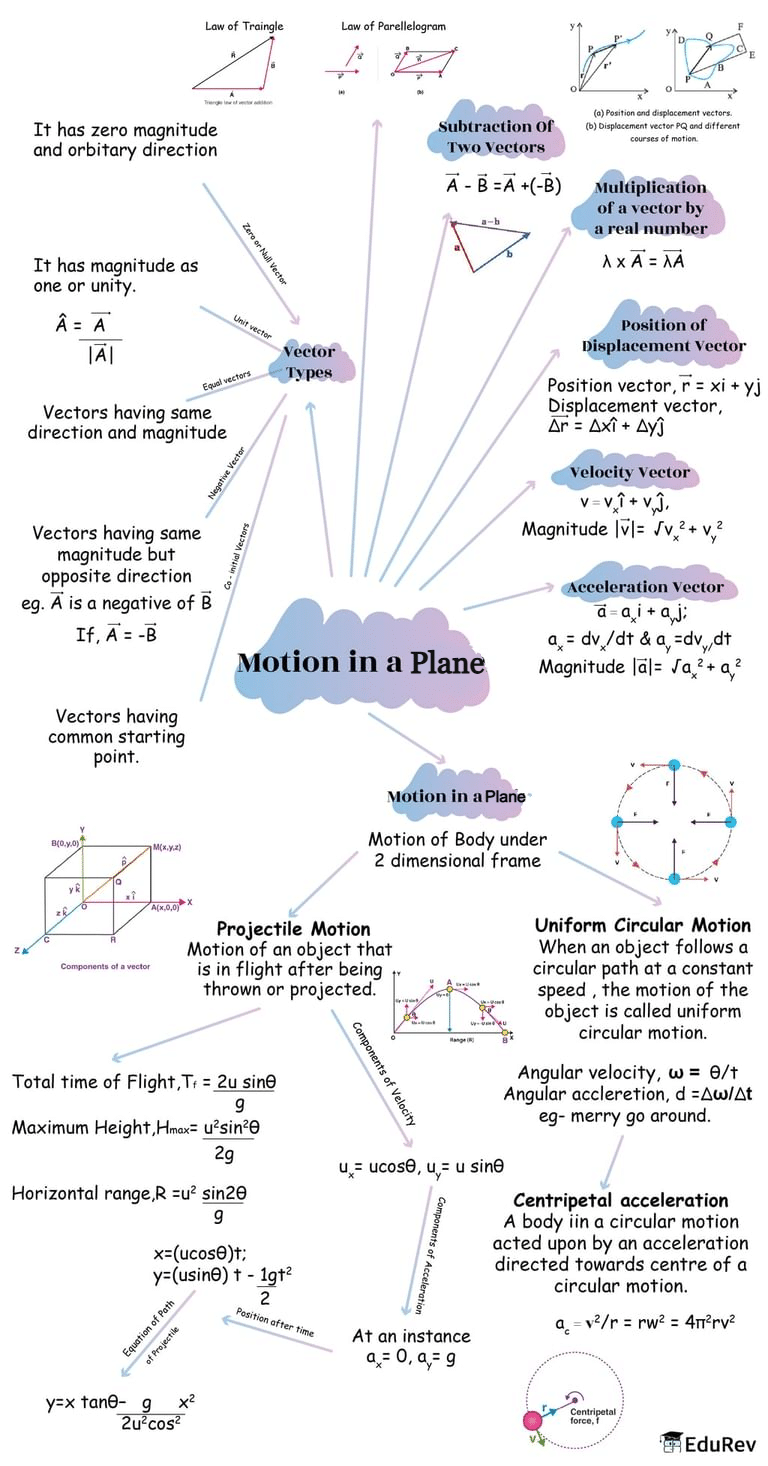NEET Exam > NEET Notes > Physics Class 11 > Mind Map: Motion in a Plane
Mind Map: Motion in a Plane | Physics Class 11 - NEET PDF Download

The document Mind Map: Motion in a Plane | Physics Class 11 - NEET is a part of the NEET Course Physics Class 11.
All you need of NEET at this link: NEET
|
122 videos|493 docs|98 tests
|
FAQs on Mind Map: Motion in a Plane - Physics Class 11 - NEET
| 1. What is motion in a plane? |  |
Ans. Motion in a plane refers to the movement of an object in two dimensions. It includes the concept of displacement, velocity, and acceleration in a two-dimensional space, which can be represented on a coordinate system such as Cartesian coordinates.
| 2. How do we analyze projectile motion in a plane? |  |
Ans. Projectile motion in a plane can be analyzed by breaking it down into two components: horizontal and vertical motion. The horizontal motion is uniform, while the vertical motion is influenced by gravity. By using kinematic equations, one can determine the trajectory, time of flight, and maximum height of the projectile.
| 3. What are the key equations of motion in two dimensions? |  |
Ans. The key equations of motion in two dimensions include the kinematic equations which relate displacement, velocity, acceleration, and time. For example, the equations can be expressed as:
1) \( s = ut + \frac{1}{2} a t^2 \)
2) \( v = u + at \)
where \( s \) is displacement, \( u \) is the initial velocity, \( v \) is the final velocity, \( a \) is acceleration, and \( t \) is time.
| 4. How do you calculate the resultant of two vectors in motion? |  |
Ans. The resultant of two vectors can be calculated using the parallelogram law or by using trigonometric methods. If vectors A and B are represented graphically, the resultant vector R can be found by drawing a diagonal of the parallelogram formed by vectors A and B. Mathematically, it can also be calculated using the formula \( R = \sqrt{A^2 + B^2 + 2AB \cos(\theta)} \), where \( \theta \) is the angle between the two vectors.
| 5. What is the significance of relative motion in a plane? |  |
Ans. Relative motion in a plane is significant as it allows observers to analyze the motion of objects from different frames of reference. It helps in understanding how the motion of one object appears to another moving object. This is essential in various applications, such as in collision analysis and navigation, where the relative speeds and directions are critical for accurate predictions and calculations.
Related Searches

















